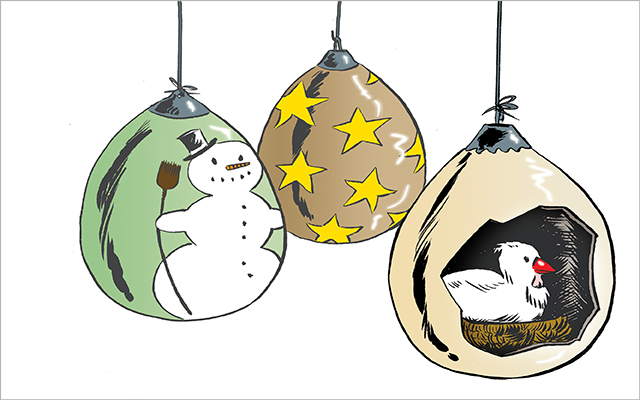Here’s a crazy, little-known fact: Eggs are seasonal.
I repeat: Chicken eggs used to be unavailable in the winter. Can you believe it?
In this day and age when you can get most any food at most any time — including all the eggs you could ever want — this is downright amazing to me.
Because we humans like eating eggs, over the millennia, we successfully bred chickens to lay many, many more of them than they did as mere “jungle fowl” in the wild. But despite all our genetic nudging, chickens never got used to cold winters.
So back in time, when the days grew short and the nights grew long (somewhere in mid-December), European and North American chickens stopped laying. They waited for three or four months until the days lengthened, and then, getting on toward Easter, they once again began laying.
So, all of those wondrous eggy holiday delights, like eggnog and bûche de Noël (a.k.a. yule log), represent a celebration of the last fresh eggs of the season. They represent our entry into a season of grim austerity and the struggle to make it through to spring.
This seasonality of eggs disappeared only with the arrival of rural electrification, when farms got electric lights and heat beginning back in the 1930s. As chickens started getting at least 14 hours of light a day and their environment was nice and warm, their hormones told them that it was safe to lay eggs. They sensed that the good weather and long days would provide a hospitable environment for baby chicks to grow up in. And so they laid eggs.
[callout]I repeat: Chicken eggs used to be unavailable in the winter. Can you believe it?[/callout]Can you imagine a world with no eggs for three months? I can’t, frankly. I think of eggs as a universally available thing, like flour, sugar, and salt, all thanks to the wonders of the modern grocery store.
I’m trying to squint and look back in time to see eggs as a seasonal sign of plenty, a last treasured flurry of oval exuberance before the darkness of winter. If I look at eggs like that, I can start to appreciate them as part of the yin and yang of abundance and austerity that followed the seasons.
Remember austerity? Overcoming austerity is one of the signature triumphs of the 20th century. In Medieval times, people would full-on hibernate during the winter. The New York Times recounted a traveler’s experience in Russia in 1900: “At the first fall of snow the whole family gathers round the stove, lies down, ceases to wrestle with the problems of human existence, and quietly goes to sleep. Once a day every one wakes up to eat a piece of hard bread. . . . The members of the family take it in turn to watch and keep the fire alight. After six months of this reposeful existence the family wakes up, shakes itself” and “goes out to see if the grass is growing.”
Here in the early years of the United States, our ancestors were not so different. They spent the winters huddled in cramped sod huts with their animals for warmth — and with no eggs.
Why bother contemplating the great swaths of winter austerity and emptiness that came before our time?
Honestly, it helps me stay grounded in this crazy holiday season. It helps me say no to some social invitations without feeling ungrateful. It helps me see the eggnog in the context of the eggnog-less preponderance. And it helps me appreciate the spectacular overabundance of the season without feeling overwhelmed by it.
Maybe it will do the same for you, or at least give a little freshness to your sense of wonder for the season. A simple egg in the midst of winter — it’s a modern miracle.



This Post Has 0 Comments